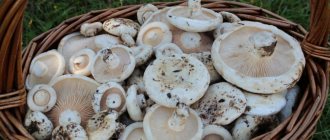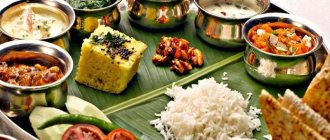Tibetan diet - this food system appeared as a need to protect the nation from the harsh highland climate. She has absorbed the best of Ayurveda and the Chinese healing tradition. Even today, despite the difficult economic conditions of the country, people living in Tibet have the lowest incidence rate. Today we will not dive deeply into this science; we will tell you some secrets of the monks’ nutrition, with the help of which, even with an active lifestyle, you can maintain maximum energy and health.
Basic 7 rules of nutrition in Tibetan medicine
The Tibetan diet will not only help you lose weight, but also significantly improve your overall well-being. In some cases, it will even relieve some chronic diseases.
In order to achieve maximum effect with its help, you need to follow simple rules:
- The diet of Tibetan monks can be classified as a dairy-vegetarian weight loss method. Therefore, while losing weight, it is important to give up any types of meat and eat only products of plant origin (vegetables and fruits).
- Fish is not prohibited, but in small portions.
- The nutrition plan should be followed for 7 days, then you can repeat or add some foods (meat) to the diet and make it a permanent diet.
- Snacking is not advisable; monks deny snacking between meals. There are no restrictions regarding serving sizes. However, this fact should not be used as a signal to overeat. This can lead to a slowdown in metabolic processes.
- Eat in small portions, chewing each piece thoroughly. In addition, the process of eating should take place in a calm environment. Snacking on the run while on a diet is prohibited.
- It is important to drink a lot, there are no restrictions. But water quality matters. This is spring and mineral still water.
- An important point - we don’t drink the food, you can take a couple of sips. Drink water 40-60 minutes and 2 hours after meals.
Physical and daily life
Living far from the bustling world gives Lamaists an incredibly sober mind and bright consciousness. One day smoothly flows into the next and is based on the following principles:
- The correct combination of waking and sleeping hours. Only by getting up with the first rays of the sun can you recharge your batteries. Monks do not encourage daytime sleep, as it worsens physical condition and reduces performance;
- Morning group exercises on the slope of a mountain peak with cold water dousing at the end. This is not only the development of discipline, but also the strengthening of health and the renewal of the flow of thoughts;
- Silence. One of the reasons for the lack of knowledge about the teachings is the Tibetans' adherence to silence. This principle allows them to avoid negative influences on their aura and maintain harmony of body and soul;
- You should speak, weighing every word. It, like the case, is a reflection of internal imperfection. You need to be able to restrain swear words. And be able to conduct extremely reasonable conversations;
- Nutrition. Selected based on the individual needs of the body. Overeating in the teachings of Tibet is simply unacceptable, and even impossible;
- Monastic clothing must be appropriate to the weather conditions. A hypothermic or overheated body can cause an imbalance in the physical and, as a result, spiritual state;
- Fighting, theft and sexual perversion are unacceptable for followers of Tibetan teachings.
Spiritual life
Many who have experienced everyday well-being agree that happiness is based on slightly different “three pillars”. According to Tibetan teachings, a harmonious relationship should be built between the functioning of the body and soul. The following instructions may help with this:
- Living for today, learn to lead a calm and measured lifestyle, focused only on the most important things;
- Embrace the present. Constantly demanding something better from yourself and your surroundings means being in constant disappointment. The universe is neutral, it has its own course of time and the way we perceive it is purely our development;
- Analyze what is happening. Give thanks for good events sent from above and promptly learn lessons from negative ones;
- Understand that physical illness is a consequence of spiritual illness;
- Strive to improve your character on your own. Just as water wears away a stone, you should teach yourself a positive way of thinking: to be patient, fair and wise in dealing with others and with yourself;
- Develop yourself creatively, since being close to art allows you to activate hidden abilities and understand the essence of the universe much more deeply;
- Give voice to your intuition. Looking elsewhere for answers to all your questions is not the most successful approach. In most cases, the answer lies within us;
- On your journey to maintaining balance, meditate regularly. And it is best to do this in silence with the first rays of the sun.

Diet of Tibetan monks
Principles of nutrition for monks in Tibetan monasteries:
- Dairy products: if you are used to milk and cream, then it is recommended to replace it with fermented milk drinks such as kefir, sugar-free yogurt, and yogurt during the diet. The monks recommend adding feta cheese or cottage cheese to vegetable and fruit salads. These fermented milk products promote digestion and plant products are absorbed better.
- You should not mix more than 4 types of food in one meal. Some of them, which are difficult for the stomach, should be consumed separately from main meals, according to the principle of separate nutrition. Prepare dishes immediately before meals for breakfast, lunch and dinner so that they are as fresh as possible. Cook, bake, exclude frying in oil. Monks cook over an open fire.
- Prepared dishes are eaten slowly, in small portions, relaxing music is played during the meal, a peaceful, calm atmosphere reigns, all this is typical for the inhabitants of the harsh Tibetan region. Tibetan philosophers believe that a favorable atmosphere when eating allows you to avoid excess fat deposits and also cleanse yourself mentally.
- Combine the Tibetan diet with physical activity and breathing exercises. If possible, spend them in the fresh air, and not in stuffy rooms.

Where to start a raw food diet: a guide for a beginner raw foodist
Switching to a proper raw food diet is not for everyone. Why, you ask? Let's figure it out together...
Superpowers or fiction?
Perhaps we will still leave the issue of levitation of Tibetan practitioners to your discretion. Because there is no evidence to support the existence of this phenomenon. However, there is no 100% refutation.
Let’s better remember those superpowers that scientific researchers were able to record:
- Tummo. Checking your own body temperature. The skill is more than necessary, since living at altitude and in the cold, lamaists dress in fairly light clothes. There is even an exam where a student must sit in the snow on the night before dawn and dry his clothes every time they are lowered dry into a hole again and again;
- Practice slowing down your metabolism. A skill that helps you spend energy relatively slower;
- Lung-gom. The meaning of the miracle is walking through the snow at incredible speed. Meditations to reduce body weight allow you to develop such a superpower. Runners who have mastered the skill are able to cover hundreds of kilometers without rest or food;
- It is also worth remembering the possession of the miracle of incorruptibility. We have all heard about the phenomenon of Itigelov - a lama who in 1927, at the age of 75, plunged into meditation with instructions to his followers to exhume him after 3 decades. As a result, a seemingly sleeping person was taken out of the barrel, without any external changes. Its keepers claim that sometimes sweat appears on the teacher’s body.

It is true that these miracles also have their refutations. Therefore, to believe or not is entirely your choice.
Tibetan diet for weight loss
During the filming of the popular comedy “Love-Carrot-2”, singer and actress Kristina Orbakaite lost more than 8 kilograms, the diet of Tibetan monks helped her with this.
By following nutritional rules, you can lose up to 4 kg in 7 days. Weight loss occurs by avoiding fatty and starchy foods and digestion is significantly improved.
The Tibetan diet is more adapted to Europeans, since in Tibet, located high in the mountains, there is no such abundance of plant foods, vegetables and fruits. Tibetans mainly eat barley flour, lamb and yak meat.
Sample menu
The Tibetan diet for weight loss involves special nutrition for 7 days:
Monday
Breakfast: cracker or toast, glass of milk. Lunch: an apple or orange, a portion of boiled beans, a salad of parsley, green onions, peppers and tomatoes. Dinner: mineral water, any two fruits, shredded cabbage, seasoned with lemon juice.
Tuesday
Breakfast: apple or orange, glass of water. Lunch: orange, salad of apricots, apples, bananas, pears and prunes with cottage cheese, a portion of boiled fish. Dinner: zucchini stewed in vegetable oil, tomato juice and two tomatoes.
Wednesday
Breakfast: 2 crackers, a glass of yogurt. Lunch: a portion of boiled beans, a salad of cucumber, feta cheese, green onions, garlic and tomatoes with vegetable oil. Dinner: orange, two apples, tomato, slice of bread, boiled beet salad, tomato juice.
Thursday
Breakfast: small bun, glass of table water. Lunch: apple juice, salad of sweet peppers, green onions, cucumbers and herbs, a portion of boiled fish. Dinner: one cracker, tea, salad of boiled beans, garlic cloves and fresh carrots, dressed with oil.
Friday
Breakfast: a glass of kefir, a small bun. Lunch: apple, glass of drinking yogurt, red cabbage salad dressed with oil. Dinner: stewed zucchini with carrots, a piece of black bread, a glass of water.
Saturday
Breakfast: an orange or 3-4 tangerines, a glass of apple juice. Lunch: a glass of water, a salad of dill, celery, feta cheese, peppers, tomatoes and onions, a portion of grated carrots with olive oil. Dinner: two glasses of low-fat yogurt, strawberries or strawberries (150 g), a piece of cheese, 2 crackers.
Sunday
Breakfast: a glass of curdled milk or milk, two crackers. Lunch: a glass of table water, fresh cabbage salad seasoned with lemon juice, a portion of boiled fish. Dinner: a glass of juice, boiled beans with olive oil, two fruits of your choice (pears, apples, bananas or peaches), a piece of cheese.
During diet days, the final evening meal should be no later than 18-19 hours.

Meal sequence
Divide daily nutrition into 4–5 components:
Breakfast
Vegetables, fruits, berries as an independent dish (fresh, stewed) or in the form of a salad with the addition of cottage cheese and feta cheese. Light vegetable soup without frying in oil. Let's choose one thing.
Dinner
Seafood baked or boiled. Fish, shrimp, squid.
Afternoon snack
Fermented milk products - kefir, yogurt, sugar-free yogurt. If you are too hungry, then add one boiled chicken egg.
First dinner
Here it is important to consider what time you are used to going to bed. If it is late, then a small portion of boiled fish is allowed. If you go to bed early, before 10 pm, then it is recommended to skip the first dinner.
Second dinner
Tibetan monks eat bread before going to bed. It can be replaced with bran, whole grain bread, crispbread or nuts.
How to make your own tsampa?
Today you can buy tsampa in stores. Entrepreneurs, usually from those nations for which dishes made from barley flour are traditional, have opened the production of this useful product.
People who respect the roots and support the traditions of their people are worthy of respect. Thanks to them, we not only receive information about the food culture of different nations, but also have the opportunity to purchase natural, high-quality and healthy products.
If you can’t buy, don’t be upset. Making tsampa at home is not at all difficult; in fact, it is even healthier. Dry the washed barley groats on a towel and gently fry in a frying pan without oil (it is better not to overcook than to overcook). Grind in a coffee grinder and the tsampa is ready!
Even if you don’t find barley in the store, buy pearl barley. Pearl barley, if you didn’t know, is polished barley. Due to the processing, there is less fiber in pearl barley, but other beneficial properties are almost enough to get the main benefits of this product.
Using the proposed simple recipes for preparing tsampa, everyone can change them to their own taste, adding different ingredients and changing cooking methods.










